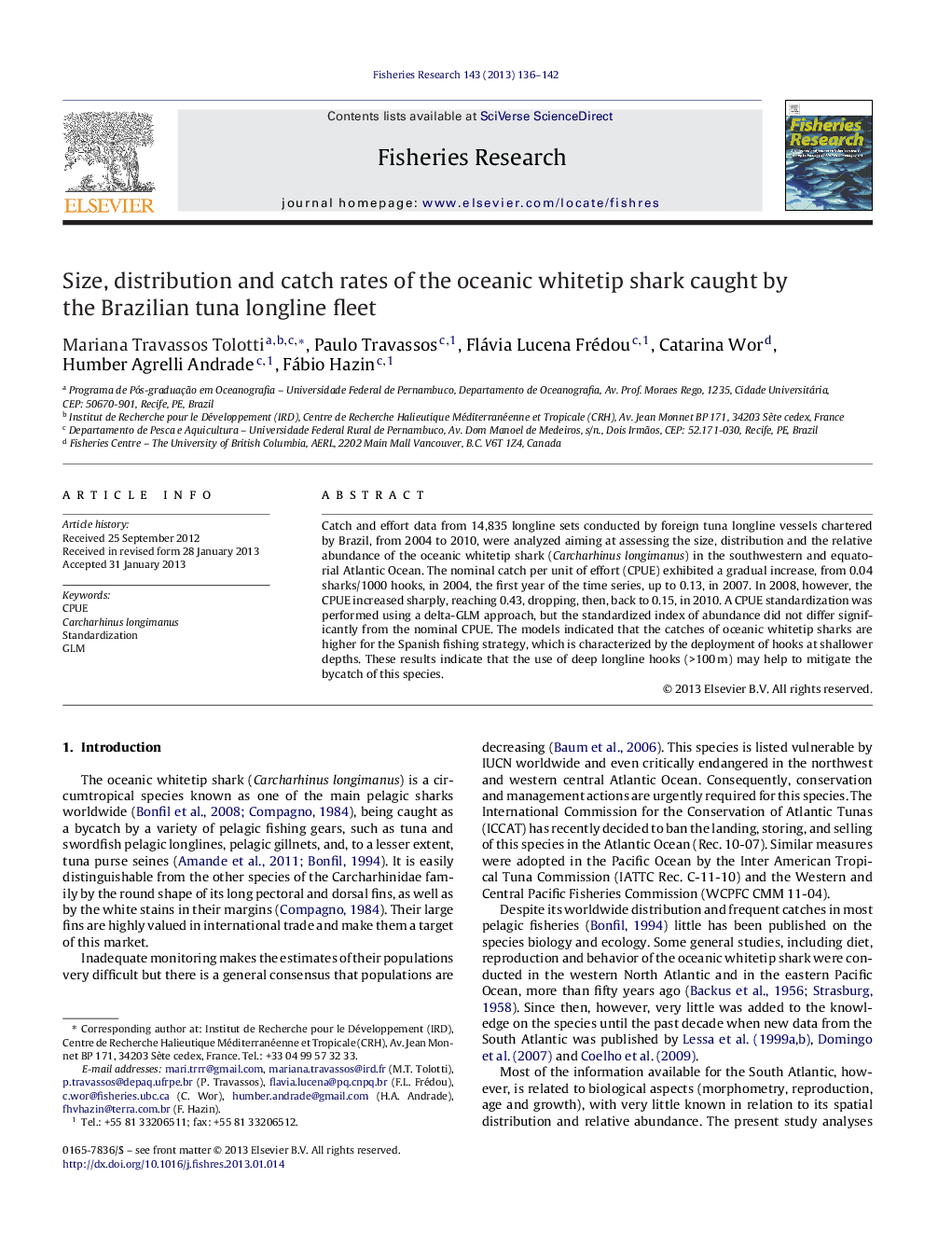| Article ID | Journal | Published Year | Pages | File Type |
|---|---|---|---|---|
| 4543167 | Fisheries Research | 2013 | 7 Pages |
Catch and effort data from 14,835 longline sets conducted by foreign tuna longline vessels chartered by Brazil, from 2004 to 2010, were analyzed aiming at assessing the size, distribution and the relative abundance of the oceanic whitetip shark (Carcharhinus longimanus) in the southwestern and equatorial Atlantic Ocean. The nominal catch per unit of effort (CPUE) exhibited a gradual increase, from 0.04 sharks/1000 hooks, in 2004, the first year of the time series, up to 0.13, in 2007. In 2008, however, the CPUE increased sharply, reaching 0.43, dropping, then, back to 0.15, in 2010. A CPUE standardization was performed using a delta-GLM approach, but the standardized index of abundance did not differ significantly from the nominal CPUE. The models indicated that the catches of oceanic whitetip sharks are higher for the Spanish fishing strategy, which is characterized by the deployment of hooks at shallower depths. These results indicate that the use of deep longline hooks (>100 m) may help to mitigate the bycatch of this species.
► Size, distribution and relative abundance of the oceanic whitetip shark were analyzed. ► CPUE gradually increased from 2004 to 2007 and peaked in 2008. ► CPUE was higher for the fishing strategy deploying hooks at shallower depths. ► Results support the use of deep hooks to mitigate the bycatch of this species. ► Most catches were from sharks under the size at first maturity.
